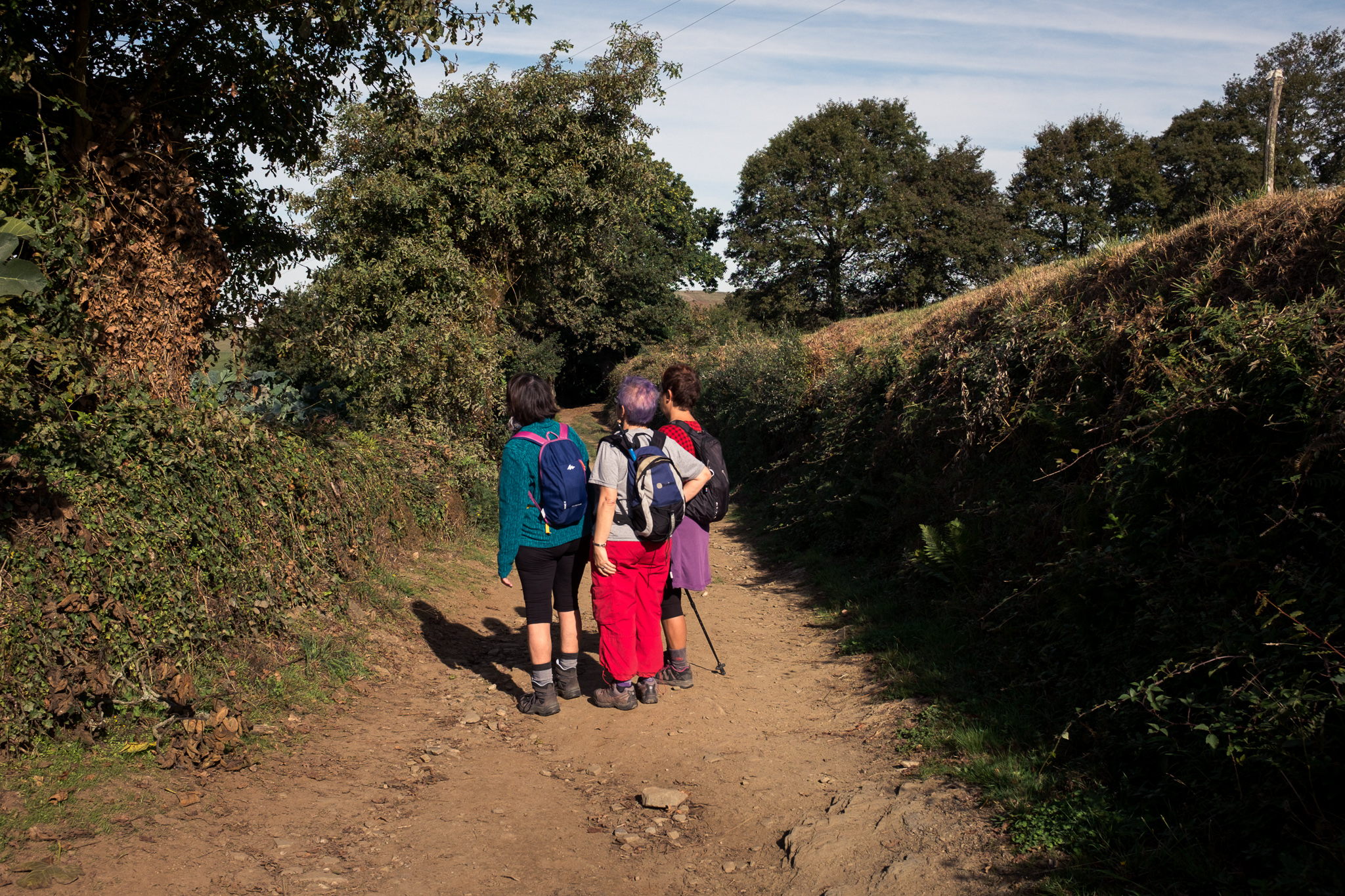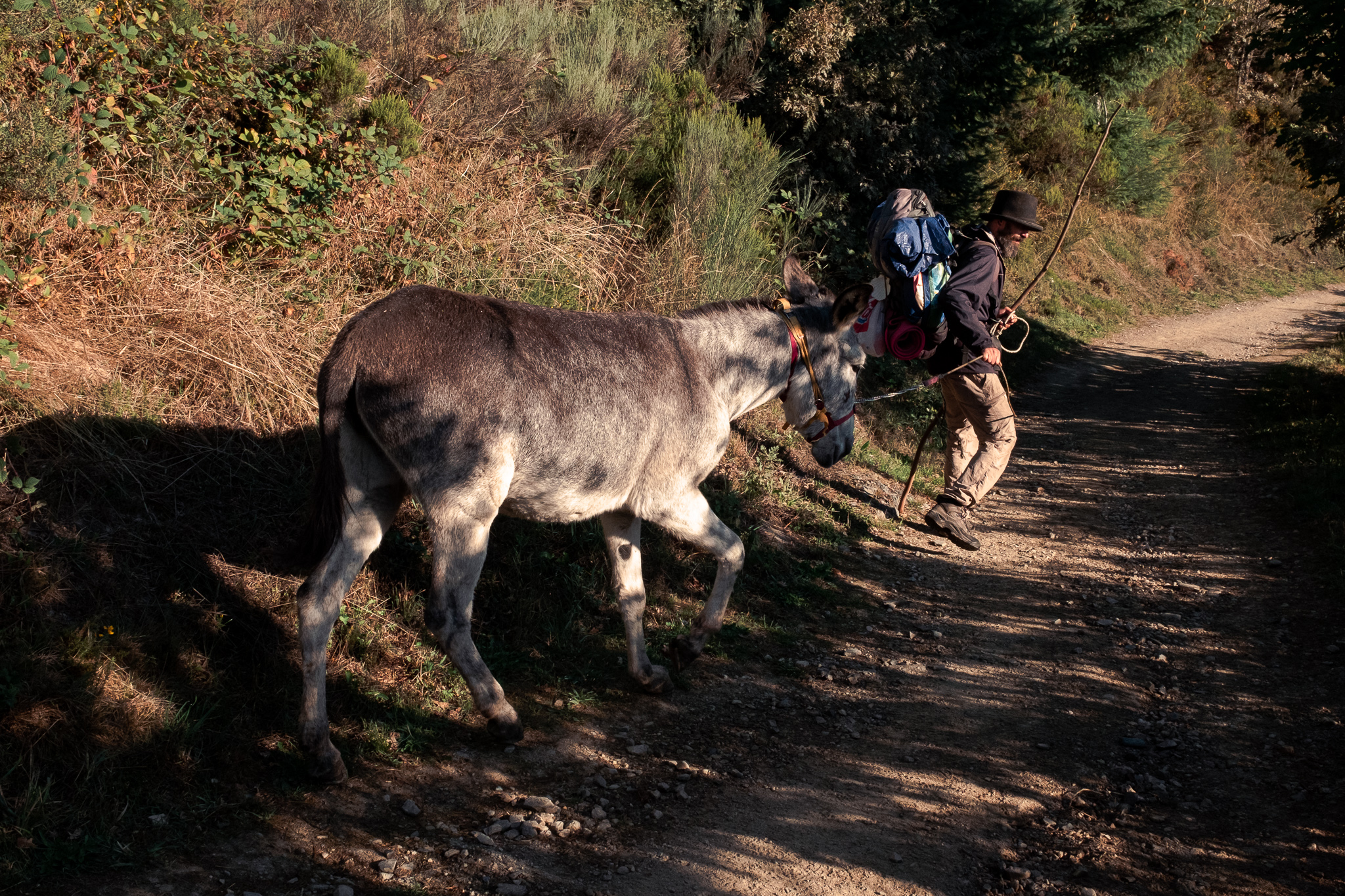





























︎︎︎
Walking is a mode of travel like no other. You’re completely reliant upon the strength, will, and limitations of your own body and mind. It can become a form of meditation, and the practice is well-documented throughout history - walkers and ramblers, famous and otherwise, have long walked for the benefit to their health and work, and a feeling of freedom.
Of this everyday practice, the pilgrimage is an ancient tradition that has been experiencing a contemporary revival. Originally a religious custom of the more devout, it is evolving. Many now decide to walk a pilgrimage as a personal challenge, a fun experience or active holiday, a way to connect with loved ones - living or dead, and for many other reasons.
The Camino de Santiago (the "Way of St. James") is one of the most well-known pilgrimages around the world. It is believed that the martyred apostle St. James was brought to and buried in what is now the city of Santiago de Compostela. Beginning in the South of France, the most well-known route and a UNESCO World Heritage, the Camino Frances (the French Way) climbs over the Pyrenees and runs almost 800km across a changeable landscape until reaching the endpoint, the cathedral of Santiago de Compostela in the northwestern region of Galicia and the shrine of St. James.
The pilgrimage has numerous routes all across Spain as well as several starting points outside of the country, including in the UK, France and Portugal. Traditionally it is said that the pilgrimage begins the moment you pass your front door. Unofficially, the pilgrimage continues on. A few days walking and you’ll find yourself on the Costa do Morte (the “Coast of Death”) in Fisterra – once thought to be the end of the western world and now known as KM 0.
Of this everyday practice, the pilgrimage is an ancient tradition that has been experiencing a contemporary revival. Originally a religious custom of the more devout, it is evolving. Many now decide to walk a pilgrimage as a personal challenge, a fun experience or active holiday, a way to connect with loved ones - living or dead, and for many other reasons.
The Camino de Santiago (the "Way of St. James") is one of the most well-known pilgrimages around the world. It is believed that the martyred apostle St. James was brought to and buried in what is now the city of Santiago de Compostela. Beginning in the South of France, the most well-known route and a UNESCO World Heritage, the Camino Frances (the French Way) climbs over the Pyrenees and runs almost 800km across a changeable landscape until reaching the endpoint, the cathedral of Santiago de Compostela in the northwestern region of Galicia and the shrine of St. James.
The pilgrimage has numerous routes all across Spain as well as several starting points outside of the country, including in the UK, France and Portugal. Traditionally it is said that the pilgrimage begins the moment you pass your front door. Unofficially, the pilgrimage continues on. A few days walking and you’ll find yourself on the Costa do Morte (the “Coast of Death”) in Fisterra – once thought to be the end of the western world and now known as KM 0.
In 2019, the record was broken. 347,578 pilgrims completed the Camino de Santiago with 94% of those being walkers (you can also do the Camino by bike or on horseback). And, for a second consecutive year, more women than men completed the Camino de Santiago.
When on the trail, worries, stresses, and to-do lists fall away in favour of a simplistic daily routine: eat, walk, sleep, repeat. Days walking are mostly spent in varying levels of pain and tiredness, though it's a clean sort of pain and tiredness that comes after a sustaining and bracing workout.
At the same time, your focus turns outward to the places, the people, and the changing land around you - the heat of the burning afternoon sun, the fresh chill of the misty mornings, the uncomfortable damp feeling of a rainy day.
You become immersed in a completely different time and world, where you can find utter relief and joy and incredulity at the end of each day when you look back and see have far you've come - huge distances covered by your own two feet, every single thing you need carried on your own back, held up and moving by your own strength.
When on the trail, worries, stresses, and to-do lists fall away in favour of a simplistic daily routine: eat, walk, sleep, repeat. Days walking are mostly spent in varying levels of pain and tiredness, though it's a clean sort of pain and tiredness that comes after a sustaining and bracing workout.
At the same time, your focus turns outward to the places, the people, and the changing land around you - the heat of the burning afternoon sun, the fresh chill of the misty mornings, the uncomfortable damp feeling of a rainy day.
You become immersed in a completely different time and world, where you can find utter relief and joy and incredulity at the end of each day when you look back and see have far you've come - huge distances covered by your own two feet, every single thing you need carried on your own back, held up and moving by your own strength.